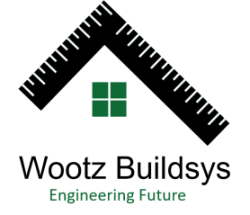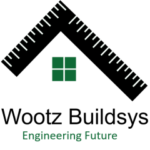
The industrial landscape is rapidly evolving, with efficiency, cost-effectiveness, and sustainability becoming paramount. Pre-Engineered Buildings (PEB) construction has emerged as a preferred method for constructing factories, offering numerous advantages over traditional construction techniques. This blog will explore what PEB construction for factories entails, the process involved, and the benefits it brings to the table.
Understanding PEB Construction for Factories

Pre-Engineered Buildings (PEB) are structures built using PEB Construction for Factories and then assembled on-site. This construction method is highly efficient and ensures high-quality standards, making it ideal for industrial applications such as factories.
The PEB Construction Process
1. Design and Engineering:
The PEB Construction for Factories process begins with detailed design and engineering. Engineers and architects work together to create a customized design that meets the specific needs of the factory. This stage involves structural analysis, material selection, and precise engineering calculations to ensure the building’s stability and functionality.
2. Fabrication of Components:
The design’s finished, so we’re onto the next thing – creating parts. Imagine doing this in a super careful factory space. Here, they make things like steel beams, columns, trusses, and more, right to the details. Thanks to modern machines and tech, this all gets done perfectly and top-notch.
3. Transportation to the Site:
Once made, the pre-built parts get sent to the building place. This process is thought out to stop late arrivals and cut down wait times. These parts are typically not heavy and simple to manage, which lowers move costs and makes logistics easier.
4. Site Preparation:
First up, we’ve got to get the construction area ready. This means we clear the land, make the ground flat, and put down the foundation. These steps are super important. They make sure our PEB structure stands strong and lasts a long time.
5. Assembly and Erection:
The pre-fabricated components are then assembled and erected on-site. This phase is relatively quick, as the components fit together seamlessly like a puzzle. Cranes and other equipment are used to position the elements, and skilled labor ensures accurate assembly. The use of bolted connections rather than welding speeds up the process and enhances structural integrity.
6. Finishing Touches:
Once the main structure is erected, the finishing touches are added. This includes installing roofing, wall panels, insulation, doors, windows, and any other necessary fittings. Electrical, plumbing, and HVAC systems are also installed at this stage.
Benefits of PEB Construction for Factories
1. Speedy Construction:
PEB Construction for Factories significantly reduces the overall construction time. The pre-fabrication of components off-site allows simultaneous site preparation and component manufacturing, leading to faster project completion. This speed is crucial for factories, enabling quicker operational startup and faster returns on investment.
2. Cost Efficiency:
PEB process accuracy cuts down on wasted materials, which means costs go down. Less time on the construction schedule also means less money spent on workers and overhead. So, factory owners can save a good deal of money and the quality remains top-notch.
3. Design Flexibility:
PEB systems offer remarkable design flexibility. Factories can be customized to meet specific operational requirements, from open floor plans to specialized layouts for machinery and equipment. The modular nature of PEB allows easy future expansions or modifications, ensuring long-term adaptability.
4. Structural Durability and Safety:
PEB structures are designed to withstand various environmental conditions, including heavy loads, high winds, and seismic activities. The use of high-quality steel and rigorous quality control during fabrication ensures that PEB factories are durable and safe, providing a secure environment for operations.
5. Sustainability :
PEB Construction for Factories is inherently sustainable. The efficient use of materials reduces waste, and steel, the primary material used, is recyclable. Additionally, PEB factories can incorporate energy-efficient systems, such as solar panels and rainwater harvesting, further reducing their environmental impact.
6. Quality Control :
The controlled factory environment where PEB components are manufactured ensures high standards of quality and consistency. This level of quality control is difficult to achieve with traditional on-site construction methods, where variables such as weather and labor conditions can affect the outcome.
7. Reduced Maintenance:
PEB structures require less maintenance compared to traditional buildings. The use of high-quality materials and precision engineering results in buildings that are resistant to corrosion, pests, and other common issues, leading to lower maintenance costs over the building’s lifespan.
Conclusion
PEB Construction for Factories for factories is revolutionizing the industrial construction sector. Its numerous benefits, including speedy construction, cost efficiency, design flexibility, structural durability, sustainability, quality control, and reduced maintenance, make it an ideal choice for factory projects. As industries in India and around the world continue to evolve, PEB construction stands out as a forward-thinking solution that meets the demands of modern industrial operations. Whether you’re planning to build a new factory or expand an existing one, PEB construction offers a compelling path to success.
FAQ’s Frequently Asked Questions
1: What is the main advantage of PEB construction for factories?
Answer: The primary advantage of PEB construction for factories is the speed of construction. The prefabricated components are manufactured off-site, allowing for simultaneous site preparation and component fabrication, leading to significantly faster project completion compared to traditional construction methods.
2: How does PEB construction ensure cost-efficiency for factories?
PEB construction is cost-efficient for factories due to several factors:
Reduced material wastage through precise fabrication.
Lower labor costs and overhead expenses due to the shortened construction timeline.
Design flexibility that allows for customization and future expansions/modifications without incurring high costs.
3: What are the sustainability benefits of PEB construction for factories?
PEB construction offers several sustainability benefits for factories:
Efficient use of materials, reducing waste.
The ability to incorporate eco-friendly systems like solar panels and rainwater harvesting.
The use of recyclable steel as the primary building material.
Lower maintenance requirements, reducing the environmental impact over the building’s lifespan.
4: How does PEB construction ensure high-quality standards for factories?
PEB construction ensures high-quality standards through several mechanisms:
The controlled factory environment where the components are manufactured.
Strict quality control measures during the fabrication process.
The use of high-quality materials and precision engineering.
The reduced variability compared to traditional on-site construction.
bandar togel situs togel cabe4d cabe4d cabe4d jacktoto togel online toto togel situs toto jacktoto situs toto situs toto situs slot slot gacor jacktoto slot online


